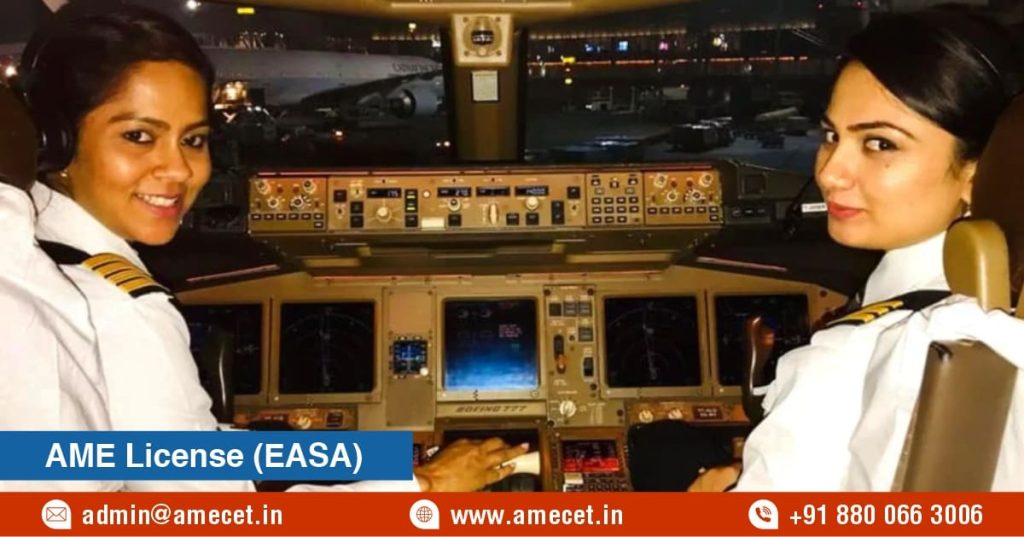How Long Does it Take to Get an EASA AME License?
Posted on : 2 August, 2024 5:42 pm
Obtaining an EASA AME (Aircraft Maintenance Engineer) License typically takes around 2 to 4 years. The process involves completing an approved training program, which includes theoretical coursework and practical experience. Following the training, candidates must pass written and practical examinations. Additionally, accumulating relevant work experience under the supervision of a licensed engineer is required. The exact duration can vary based on individual progress, the training provider, and the specific license category pursued. This rigorous process ensures that AMEs are thoroughly prepared for their critical role in aviation safety.
Step-by-Step Licensing Process
The EASA AME licensing process involves several key steps to ensure thorough preparation. Candidates start with enrolling in an approved training program, followed by completing theoretical and practical coursework. After training, they must pass written and practical exams. Gaining relevant work experience under supervision is essential before applying for the license. Successful candidates receive their license upon meeting all requirements, enabling them to work as certified Aircraft Maintenance Engineers.
Points:
- Enroll in an Approved Training Program: Choose a course accredited by EASA.
- Complete Theoretical Training: Study aviation regulations, systems, and maintenance procedures.
- Undertake Practical Training: Gain hands-on experience with aircraft maintenance.
- Pass Written Examinations: Demonstrate knowledge through theoretical tests.
- Pass Practical Assessments: Show skills through hands-on evaluations.
- Accumulate Work Experience: Work under a licensed engineer to gain real-world experience.
- Submit License Application: Apply for the license with completed training and experience documentation.
- Receive EASA AME License: Obtain certification upon meeting all requirements and passing assessments.
Duration of Theoretical Training
Theoretical training for an EASA AME license typically lasts between 6 to 12 months, depending on the training provider and program format. This phase includes comprehensive coursework on aviation regulations, aircraft systems, and maintenance procedures. Classes may be offered in full-time or part-time formats, with some programs providing online options. The duration also varies based on the candidate’s prior knowledge and learning pace.
Points:
- Course Duration: Typically 6 to 12 months.
- Full-Time vs. Part-Time: Options available based on individual schedules.
- Online vs. In-Person: Flexibility in learning formats.
- Core Subjects: Includes aviation regulations, systems, and maintenance procedures.
- Intensive Courses: Shorter duration with more intensive study.
- Part-Time Courses: Extended duration allowing for concurrent work.
- Prior Knowledge: Impact of previous experience on duration.
- Training Provider: Differences in program length and structure.
Practical Training Requirements
Practical training for an EASA AME license involves hands-on experience with aircraft maintenance under the supervision of a licensed engineer. This phase typically lasts from 6 months to 2 years, depending on the program and individual progress. Candidates must demonstrate their ability to perform various maintenance tasks, such as inspections and repairs, and complete a set number of hours working directly on aircraft.
Points:
- Duration: Usually 6 months to 2 years.
- Supervised Experience: Work under a licensed AME.
- Task Proficiency: Perform inspections, repairs, and maintenance.
- Work Hours: Accumulate a required number of hours.
- Real-World Application: Apply theoretical knowledge in practical settings.
- Variety of Tasks: Gain experience with different maintenance activities.
- Documentation: Keep detailed records of practical training.
- Assessment: Demonstrate skills to meet certification standards.
Work Experience Requirements
For an EASA AME license, candidates must accumulate significant work experience, typically ranging from 1 to 3 years. This experience should be gained under the supervision of a licensed AME and involve hands-on maintenance tasks on aircraft. The work experience must include a variety of maintenance activities to ensure comprehensive training. Detailed records of the work performed must be maintained and verified as part of the licensing process.
Points:
- Duration: Generally 1 to 3 years of experience.
- Supervised Work: Must be conducted under a licensed AME.
- Variety of Tasks: Includes various maintenance and repair activities.
- Documentation: Maintain detailed records of work performed.
- Verification: Experience must be verified by a licensed supervisor.
- Practical Application: Apply theoretical knowledge in real-world scenarios.
- Work Environment: Experience should be gained in an approved facility.
- Compliance: Adhere to EASA regulations and standards during training.
Career Pathways and Opportunities Post-Licensing
After obtaining an EASA AME license, various career pathways and opportunities become available. Licensed AMEs can work in commercial airlines, maintenance, repair, and overhaul (MRO) facilities, or aerospace manufacturers. They may specialize in areas such as avionics or engine maintenance. Career progression can lead to senior technician roles, management positions, or consultancy. Continuous professional development and additional certifications can further enhance career prospects.
Points:
- Commercial Airlines: Work as a maintenance technician for major airlines.
- MRO Facilities: Join maintenance, repair, and overhaul organizations.
- Aerospace Manufacturers: Engage in maintenance for aircraft manufacturers.
- Specializations: Focus on areas like avionics or engines.
- Senior Technician Roles: Advance to more senior technical positions.
- Management Opportunities: Move into supervisory or management roles.
- Consultancy: Provide expert advice and services.
- Professional Development: Pursue additional certifications and training.
In conclusion, obtaining an EASA AME license is a thorough and rewarding process, involving rigorous theoretical and practical training, along with valuable work experience. The journey typically spans from 1 to 3 years, encompassing various stages from classroom learning to hands-on maintenance. Upon achieving certification, AMEs unlock diverse career opportunities across commercial airlines, MRO facilities, and aerospace industries. Continued professional growth and specialization can further enhance career prospects. The dedication and expertise required for this license underscore its significance in maintaining the safety and efficiency of modern aviation.

